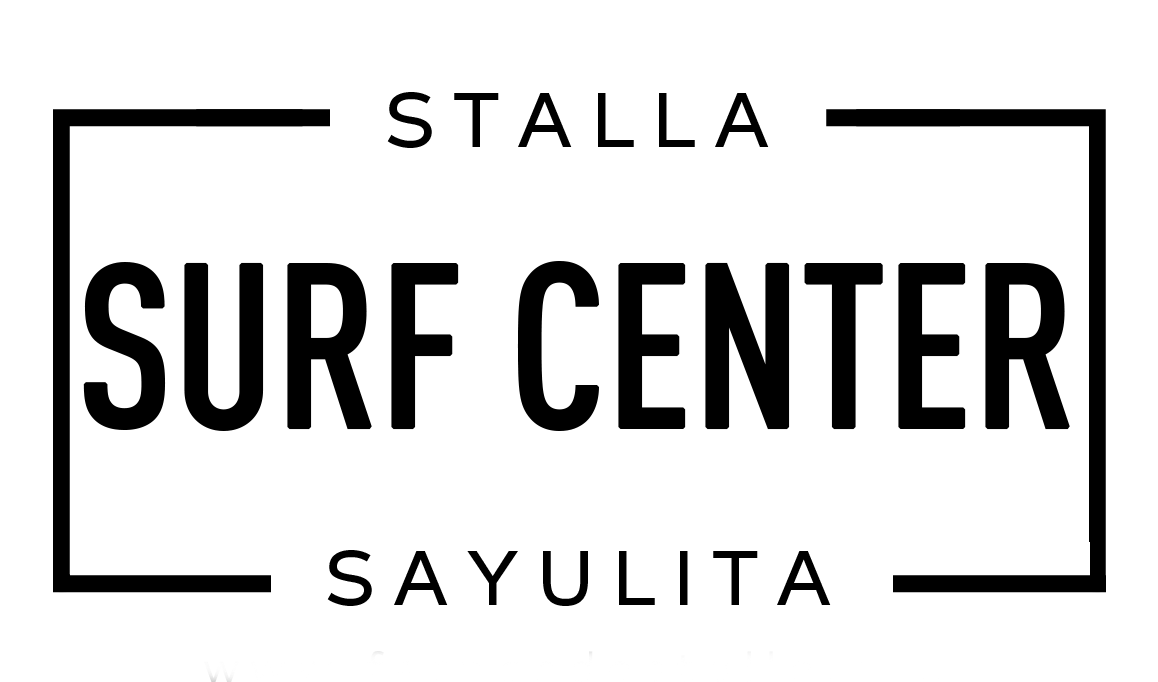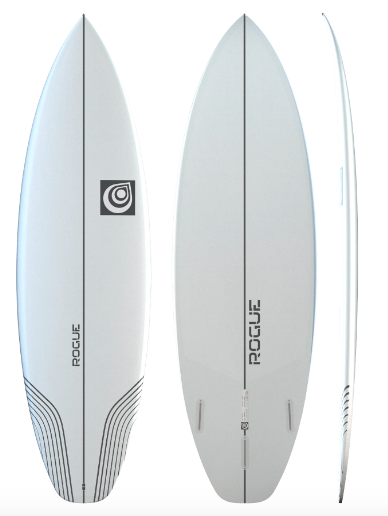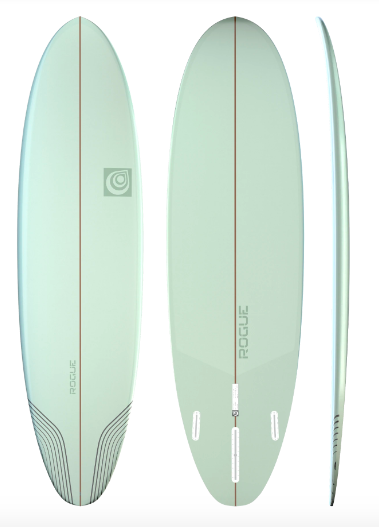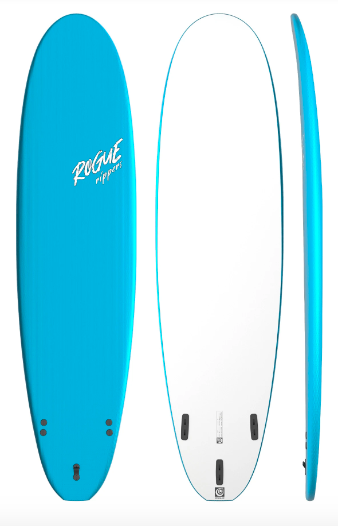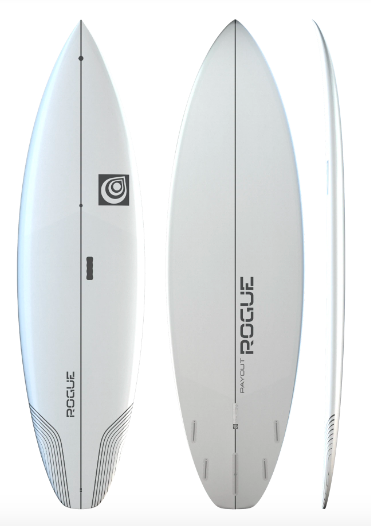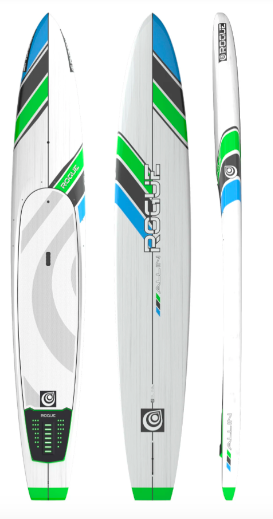Fernando Stalla Claims Hennessey’s Title, Goes From :( to :) In 24 Hours
Fernando Stalla has just won the Elite Race at the 2012 Hennessey’s World SUP Championships in Cabo, Mexico. The victory, along with his 2nd place in yesterday’s Distance Race, was enough to give him the overall championship title ahead of Chase Kosterlitz and Ryan Helm.
So Fernando is a pretty happy guy right now, though only 24 hours ago he was totally disappointed with having to settle for 2nd. It’s fun being able to watch paddlers’ reactions to victory and defeat as they happen…
SATURDAY
“Second place in the Distance Race after leading for much of it :(”
SUNDAY
“:) ! 1st place in today’s Elite Race, with Ryan Helm 2nd and Chase 3rd, which means I won the overall World Championship! Chase 2nd and Ryan 3rd overall. Thanks to Rogue SUP for the board that went really good! To Punta Sayulita for the suport, to SUP Mexico for organizing a great event, to Quickblade Paddles,to David from Surfing Cabo as well as the members of the Sayulita Surf Club.”
…as a side note, I really wouldn’t take Bing with you when you’re travelling to Mexico.
our quiver
Only the best quality.
At Stalla Surf Center we have a wide variety of surfboards and paddleboards to pick from foam boards to high performance shapes.
frequently asked questions
Find all the answers you need.
How much are surfing lessons in Sayulita?
Private $1100 pesos mx
Group $700 pesos mx
Can beginners surf in Sayulita?
The South end of Sayulita is a beach that's great for beginners and surfers seeking smaller waves. In the center and to the north is the reef where it gets progressively larger.
Is Sayulita good for surfing?
The beach is one of the most adored places in the world to surf. Sayulita has to its credit surf champions as well. The beach is a paradise for all levels of surfers right from beginners to advanced. With long rides, it is the perfect spot for both long and short boarders.
What airport serves Sayulita?
Puerto Vallarta Ordaz Airport is 18 miles away from Sayulita
Where is Stalla Surf Center located?
At Selina Sayulita Hotel just a few steps away from the beach!
THE ULTIMATE GUIDE TO SAYULITA SURF
Sayulita is a charmer.
Sayulita is a charmer. Let’s get that out of the way first. Sombreros jostle in the tequila bars on its cacti-sprouting central plaza. Cobbled streets lined with happy-hour beer holes and coffee joints filter off this way and that. Cool boutique hotels and surf hostels abound. It’s just the sort of place you’d imagine when you get a-thinking about a Mexican holiday.
But you’re not here for R&R, right? Well…no worries. There are upwards of 15 surf breaks in the vicinity of Sayulita. That’s because the town puts you smack dab in the heart of a region known as the Riviera Nayarit. It’s a long stretch of shoreline that runs northwards from Puerto Vallarta, and it’s loaded with reefs, point breaks, and some beginner-friendly beach breaks for those with the surfboard in tow.
The town of Sayulita has managed to elevate itself to one of the surf havens of the riviera by offering a trio of breaks right on the doorstep. We’re not going to pretend they are the best-quality waves going. They aren’t. However, they go do give a great selection of different styles of riding, meaning you can graduate from mellow beach breaks to left-right reefs without even leaving town.
Of course, you can venture further afield. There are oodles of schools and tours on offer. They could whisk you down to the Punta Mita surf spots, where you can catch nice A-frame wedges. Or, they could whisk you northwards to the challenging fast rides of San Pancho and beyond. It’s a region you won’t get bored of in a hurry. It’s also got loads in the way of après surf and authentic Mexican charm. We’re literally counting down the days until we can go back.
Where is Sayulita, exactly?
Sayulita was once just a relaxed fishing village a few clicks north of the buzzing coast city of Puerto Vallarta. The discovery of its powder-white beaches and great breaks means that it now bustles with life. Thousands of travelers per year come to seek it out on the 200 Highway heading north. It’s actually one of the first towns you’ll come to on the famous Riviera Nayarit. Buses in from Puerto Vallarta take around one hour. Coming from inland Mexico, you can arrive from Guadalajara in around five hours .
A guide to the best Sayulita surf spots
We’ve broken down the array of surf spots that Sayulita brings to the table into ones that are in the town itself and ones that aren’t. Beginners can usually rely on the first bunch. Expert riders might want to get searching a little further afield, because Punta Mita and other riviera towns have some good treats up their sleeve!
Surf spots in Sayulita town itself
Sayulita Surf Guide
Sayulita's broad, sandy beach faces slightly north of west, and the headland beyond -- called Punta Sayulita -- swings to true north, thus absorbing much of the spring and summer S swell that graces points farther south and north on the Mainland Mexican coast. It's not world-class, nevertheless, a fun lefthander can be found breaking just off the beach on the north end of town, offering up clean, sectiony lines that are fun for longboarders and occasionally worthwhile for shortboarders (when a N-W or W swell shows up). The righthander in the middle of town is the main attraction, a mix of sand and rock delivering a shifty longboard wave most days that occasionally gets high performance on a solid swell.
Sandbar
Beginners
This is probably the break that put Playa Sayulita on the surfing map of Mexico. It’s certainly the reason there are so many surf schools in the town. That’s because it’s an uber-beginner-friendly spot with mellow waves that will rarely be a challenge.
Facing north, it cuts out any heavy S-SW swells and offers good protection from the open ocean. That means regular sets with nice periods and glassy conditions. There’s also a long take-off zone that can offer both green and whitewash.
The downside of the Sandbar is that’s busy these days (like…really busy). We sat and watched one hell of a board-flying fest last time we were in town. Nonetheless – it’s a cracking place to try surfing for the first time. Just be sure to get up early.
Sayulita Right (S Right)
Beginner/Intermediate
The Sayulita Right is the most consistent wave in town. It breaks at the river mouth on the main beachfront over a rock-studded sand bottom with a few patches of reef.
Things seldom go overhead here. In fact, tummy- to chest-high waves are the usual order. Consequently, you see plenty of 8ft boards and plus in these parts – there’s no denying it’s a corker for longboards! Try to hit this one middle or low tide. Watch out for a busy line-up.
Sayulita Left (S Left)
Beginner/Intermediate
A quirky little wave that only likes to rear its head on bigger days (usually during the summer months), the Sayulita left is another river mouth. It’s located a little north-east along the beach, but is still right next door to the Sayulita Right.
It boasts a faster take off, a smaller take-off zone, and quite a quick but fun left-hander that’s a gem for goofy-footed folk. The ride can be quite long when it’s working, with a finish that’s along towards Playa Sayulita’s northern end in front of the villas.
Surf spots around Sayulita (still within reach!)
There’s no doubt that the best quality surf in Sayulita resides outside of the town. We’d say the top end of the Bahia de Banderas is where it gets true quality. For that, you’ll need to make for the town of Punta Mita. Others are in smaller surf towns where the vibe is way more chilled.
The Cove
Intermediate+
Away from Sayulita town itself is the Bahia Cove (some people call it The Cove, while others call it Bahia – after the Bahia de Banderas). It’s the most ocean-facing of all Punta Mita surf breaks. That means there’s extra exposure here, so windy days can be a no-no.
We’d recommend going early on an organized tour to get in there before the onshores start in the afternoon, mainly because you’ll need to hitch a ride on a local fishing boat to make it to the swell.
Litibu Beach
Beginner-Intermediate
The beach at Litibu sits less than 25 minutes’ drive through the coastal jungles from Sayulita town. It’s a great option for all levels, but is predominantly used by beginners and improvers looking for something a little different to the Sayulita surf spots in the town. Good things about Playa Litibu: It’s remote and not busy at all. Bad things: It can close out at the hint of a swell and is rather exposed.
Stinky’s
All levels
Sat facing the small town of Punta de Mita around 30 minutes’ drive from Sayulita, Stinky’s is one of the most popular breaks. It can cater to pretty much all levels of surfers. Beginners get mushy whitewash to practice on, but should be aware of some rock and reef underneath. Intermediates can also find some rippable and decent-length rides, although a strong S swell is usually needed to get things pumping. Hang around for low tide for the best conditions.
La Lancha
All levels
The Punta Mita area is littered with fun waves, and most of them are righthand pointbreaks. La Lancha, as well as all the other breaks in the Punta Mita area, are actually more dependable wintertime spots, despite the fact that they face southwest. This is because Cabo Corrientes blocks all significant S swell and most SSW swell, though very westerly SW swells get good, while Punta Mita is just small enough to wrap in moderate to large winter NW swells. In a land of summertime lefthanders, Punta Mita is a welcomed anomaly for traveling surfers. So expect crowds, and lots and lots of longboarders, as La Lancha and most other nearby breaks are consistently mellow, although really quite perfect and fun on the best swells.
La Lancha is one of the very best Punta Mita surf spots going. It sits on the northern edge of the Bahia de Banderas, and is still one of the most popular places for Sayulita’s surf schools to visit. Under the gaze of the Sierra Madre, it’s a wonderful beach fringed with coconut trees and ocean vines. There are two breaks. The best is a nice wedge A-frame (although it’s predominantly a left) that can be overhead and quite fast. There’s also a mellow right hander with a few boulders underfoot – great for longboarders.
San Pancho
Intermediate+
The lone break on this list that’s to the north of Sayulita sits in the town of San Pancho. There’s not to much to the wave itself. It’s a quick and challenging beach break with multiple peaks, prone to closeouts and needing a good paddle technique in the take off.
We’ve been here and watched beginners get nailed on the heavy swells. It’s not really suited to learning on, but can be a good goal if you’re keen to improve on drop ins and dealing with speed. The best thing about San Pancho is the town itself – there’s an authentic Mexican charm in the cobbled streets and playa beer bars that Sayulita lost years ago!
BURRUOS
All levels
Located out on the point at Punta de Mita, Punta Burros is a fun, somewhat soft right-hand reef with a lower-quality left-hand option around 40 minutes drive from Puerto Vallarta. A great wave for beginners, if not for the constant crowd. Most fun on a longboard, fish, or just about anything with a bit of float.
Bahia
Intermediate+
Bahia is a reef break to the north of El Faro in the Punta Mita area. There are steep rights and fast lefts that break over a rocky reef, which makes it a challenging spot for experienced surfers only. Bahia can work on small days but can get overhead on big days. It’s off the point so the surf will blow out quickly when it’s windy. It’s a remote location that is most accessible by boat, so it stays uncrowded. Bahia is best at medium to high tides.
anclote
All levels
El Anclote is a popular sandy beach in Punta Mita. It’s a great longboard and beginner wave. There are long, slow, rights near the breakwaters. El Anclote can handle a large southwest swell but is a consistently mellow surf spot. It will work during any tide, but submerged rocks can be sketchy during lower tides.
A guide to Sayulita weather and the Sayulita surf seasons
There’s usually something to surf in Sayulita whatever the time of the year. Seriously, this is considered one of the most consistent surf towns in Mexico. Of course, there are noticeable seasonal changes in the size of the swell and the Sayulita weather that goes with them.
Winter (November to March)
Snowbirds flock down from the US and Europe to enjoy the winter sun of the Riveira Nayarit between November and March. Sayulita weather hits a zenith at this time. It’s usually consistently warm and baking on the beaches. The ocean is hot but refreshing. It’s basically a great time to be alive on the Mexican Pacific.
In terms of surf, winter is actually more prone to N-NW swells. That keeps things relaxed and more manageable. The waves are consistent but usually peak at chest to head height. Sets can be really glassy, especially around the Punta Mita surf area. We would recommend doing dawn trips to the waves to beat the crowds and catch your sesh before the offshores start around the afternoon (you’ve got the heat to thank for those).
Wear: Shorties, rash vest, surf swim wear, maybe some surf booties if you’re hitting the reefs
Summer (April to September)
The summer is considered the peak surfing season in Sayulita. However, that should come with a warning: Beginners and improvers will surely feel more at home in the winter months. That’s because the summer sees the S-SW Southern Ocean start powering up the swell direction and the hurricane season off the Pacific add even more power to the equation.
The result? Double, triple overheads and really fast sets. It’s perfect if you’re a seasoned short boarder. It’s not so good for a first-time surf school. That said, you can still catch some manageable days on the reefs just in front of Sayulita itself, so it’s not totally off the menu if you’re a starter at this time of year.
As far as the weather goes, June, July and August all see temperatures hovering around the 30 degrees mark. August and September tend to be the wettest of the bunch, and there’s a load more humidity here – it’s probably not the time to plan hiking excursions to the Sierra Madre on top of the surfing!
Wear: Rash vest and board shorts is fine. Swimwear is all you need. Boots a potential if you’re hitting the reefs
